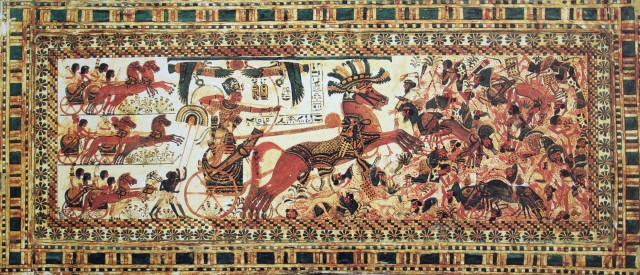
The Syrian War has lasted for over seven years, from the initial protests against the regime to the internationalised conflict today. It has resulted in the deaths of an estimated half a million people, injured and displacing millions more, devastated the country’s infrastructure and is rumbling on with no end in sight. Human rights organisations have documented serious human rights violations throughout the conflict, with the volume of reports collated by Amnesty International and Human Rights Watch alone staggering in scope and condemning in its catalogue of brutality. There has also been significant change in the number and nature of the actors involved and how they envisage the governance of a future Syrian nation-state. The current situation is a far cry from that of 2011, when protests began against the regime but not calling for its end, only to be put down so brutally that a rebellion began. The conflict has proved to be complex and dynamic, defying predictions about its outcome (i.e. Assad will lose) and may well defy current and future predictions (i.e. Assad will win). Within this the important principle that the future governance of Syria should be decided by the people of Syria, and the people of Syria alone, has been forgotten. This simple guiding criterion becomes all the more important when we consider the catastrophe that has befallen them.
This week, this blogs parent website has released a working paper and a report on the Syrian War, representing its primary research output for 2017. This is part of an ongoing research program that will continue with the establishment of an online research centre dedicated to finding an end to the violence through mediation and negotiation. The Syrian War has been described as one that is both complex and intractable and attempts at mediating an end to the conflict have proved unsuccessful. While the current prospects for a mediated solution are low, this does not mean that we should give up on mediation and negotiation, for to do so would leave the future of Syria to be decided by force, an end that would be catastrophic for the people of the country whoever won. In the meantime, while the government is currently winning on the battlefield, this does not mean it has won, or will do so in the future. There is also the possibility that the war will escalate further, with a potential future battle in Idlib province a prospect that is haunting analysts and has resulted in the early release of the report on Syria.
For conflict resolution, it is not the question of which of the sides fighting in Syria wins that is important, or what we want as a preferable outcome, but the ending of violence in Syria in order to stop the killing and to allow the search for a sustainable peace based on representative civil society to begin. It follows that within this process there will be accountability for the human rights violations that have taken place and continue today. This is no small task and it is one that seems impossible, yet people at the local level have managed to mediate and negotiate under dangerous conditions. The search for a negotiated solution has been hampered at the highest level by the assumption of predetermined outcomes, divisions between the UN Security Council powers, and a lack of leverage for mediators, among other issues. The conflict itself is also a major challenge, there has been nothing like it before and fighting in Syria now has little to do with what Syrians want and more to do with what outsiders want. To tackle the conflict factors inhibiting attempts at mediation and negotiation, which are distinct from negotiations made under duress, requires a comprehensive approach working at the national, regional, and global levels. It also requires all the actors with an influence on events and willing to talk to be allowed to do so, as to omit them leaves them with no other course except the continuation of violence.
The conflict factors are many, and there currently five distinct incompatibilities that are present in the conflict and which overlap with each other. These are: (1) the government versus the opposition, and their respective allies at the national, regional and global levels of analysis; (2) intra-opposition rivalries; (3) Israel versus Hezbollah/Iran; (4) Turkey versus the Kurds; and, (5) the ‘terror wars’ against ISIS. Such incompatibilities are not static and will change over time, but were present as of the close of 2017. These incompatibilities, of which the core one between the government and opposition is the most pervasive, ensure that the conflict is present at all levels of analysis and has become internationalised, with foreign actors at the regional and global levels contributing to the violence.
This author contends that despite the current ascendency of the Syrian government on the battlefield in Syria the war is far from over and the only way in which it will be brought to an end is through impartial and effective mediation and negotiation aimed at deescalating the conflict at all levels and addressing the incompatibilities present in the conflict. The prospects of this are low at this time but this is no reason not to work towards enabling dialogue between actors through open-ended talks chaired by the UN and backed by all the permanent UN Security Council members. This starts at the highest level, with ending the violence a priority and accountability to follow, as without accountability for war crimes by all sides there cannot be a sustained peace without re-escalation.
While we wait for this to happen, the violence continues, unabated and brutal, with potential escalations looming on the horizon.
For an outline of the incompatibilities in the Syrian War see:
For an analysis of the prospects for mediation and negotiation and recommendations for the future see:
Dr Carl Turner, Site Coordinator
